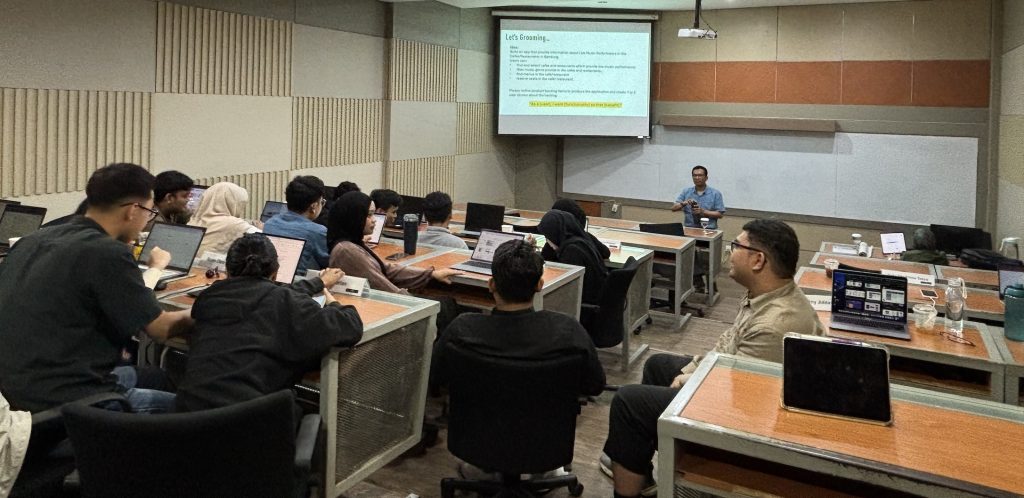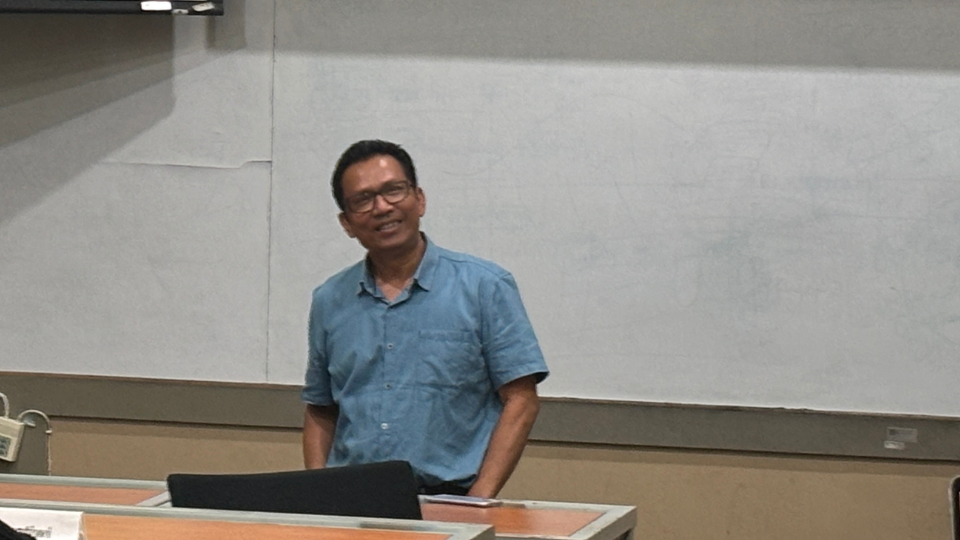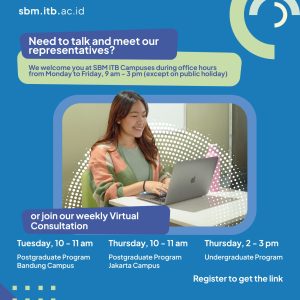The world of work is no longer linear or predictable. Amid rapid transformation, traditional approaches such as the Waterfall model are increasingly abandoned due to their rigidity and lack of flexibility. It was one of the key points discussed during a guest lecture titled “Sprint to Success: Mastering Agile and OKRs in the Digital Age,” at the SBM ITB, and delivered by Lamhot Simamora, former Billing and Collection Manager at PT Telekomunikasi Indonesia (16/4).
Lamhot introduced Agile as a modern approach to navigating uncertainty and complexity in today’s work environment. Unlike the Waterfall model, which follows a linear path, Agile emphasizes iteration, team collaboration, and adaptability.
“Agile emphasizes values such as individual interactions, collaboration with customers, and a rapid response to change,” he said. “These values make Agile more than just a methodology, it is a working principle that fosters sustainable growth and innovation.”
Despite its promising advantages, implementing Agile in many organizations is not without challenges. The greatest obstacle lies in work cultures deeply rooted in outdated systems and resistant to change.
“Change can only happen when the leader dares to set a new direction,” Lamhot explained. “An organization must be prepared to improve its products and evolve its processes and people.”
The lecture became even more engaging when a student asked, “What is the real reason behind Agile? Why change if the current system still works?”
The question sparked a deeper discussion. Lamhot emphasized that Agile is not about following trends—it’s a response to the demands of the current era. Many companies have found success by embracing Agile values, precisely what drives the push for change.
“Value is the essential component that must be present in every business,” he added.
Lamhot asked students to compile a backlog based on a case study to move beyond theory. The room quickly filled with lively discussions and diverse arguments, reflecting the students’ enthusiasm. The simulation gave them hands-on experience in applying the Agile framework rather than conceptually understanding it.
Lamhot also encouraged students to explore how digital companies like Spotify build their products and teams using Agile. Concepts such as Tribes, Chapters, and Guilds enable Spotify to foster innovation, collaboration, and ownership within small teams responsible for specific product parts. The company’s development process follows four iterative stages: Think It, Build It, Ship It, and Tweak It, ensuring continuous evolution based on user needs.
In addition to Agile, Lamhot discussed Objectives and Key Results (OKRs). This goal-setting framework helps organizations align their focus and measure achievement. For example, an objective like “Becoming the most beloved coffee shop in Bandung” can be broken down into measurable key results, such as “Increasing social media followers by 50% in three months.” Such examples demonstrate how ambitious goals can be translated into concrete, measurable actions.
The lecture instilled an important realization: success in the digital age is not just about technology but how we think and work. Adaptability is key. Collaboration and strong leadership are foundational. Clear and measurable goals provide direction.
“Don’t just fix the product. Fix the people and the process, too,” Lamhot concluded.







